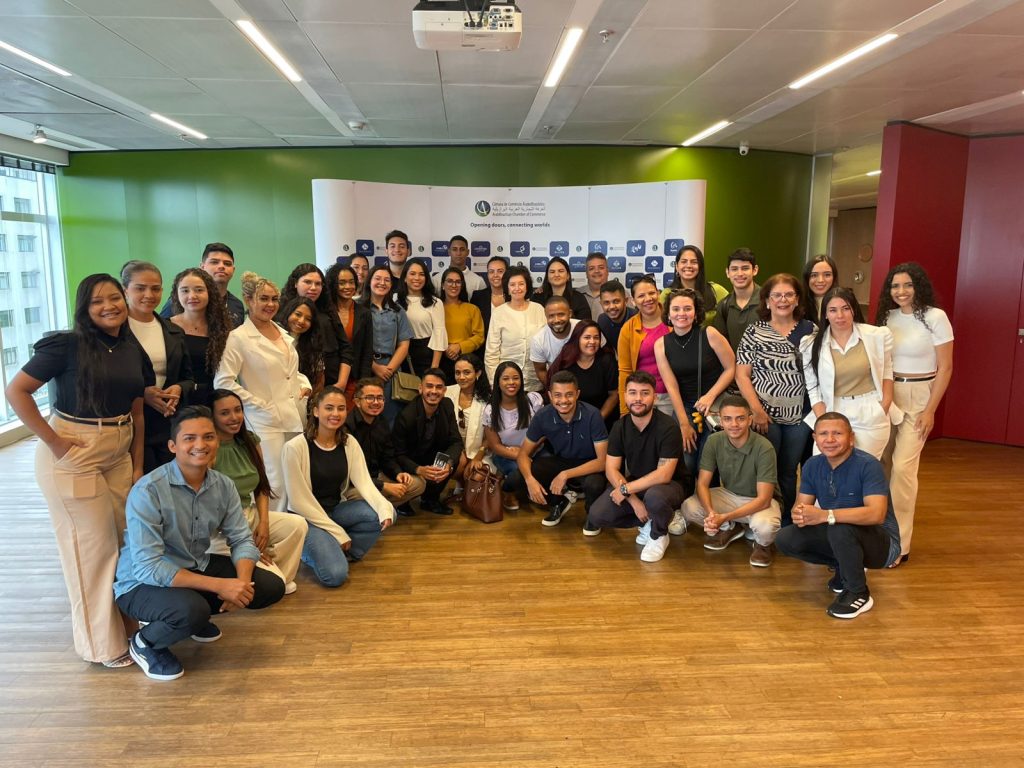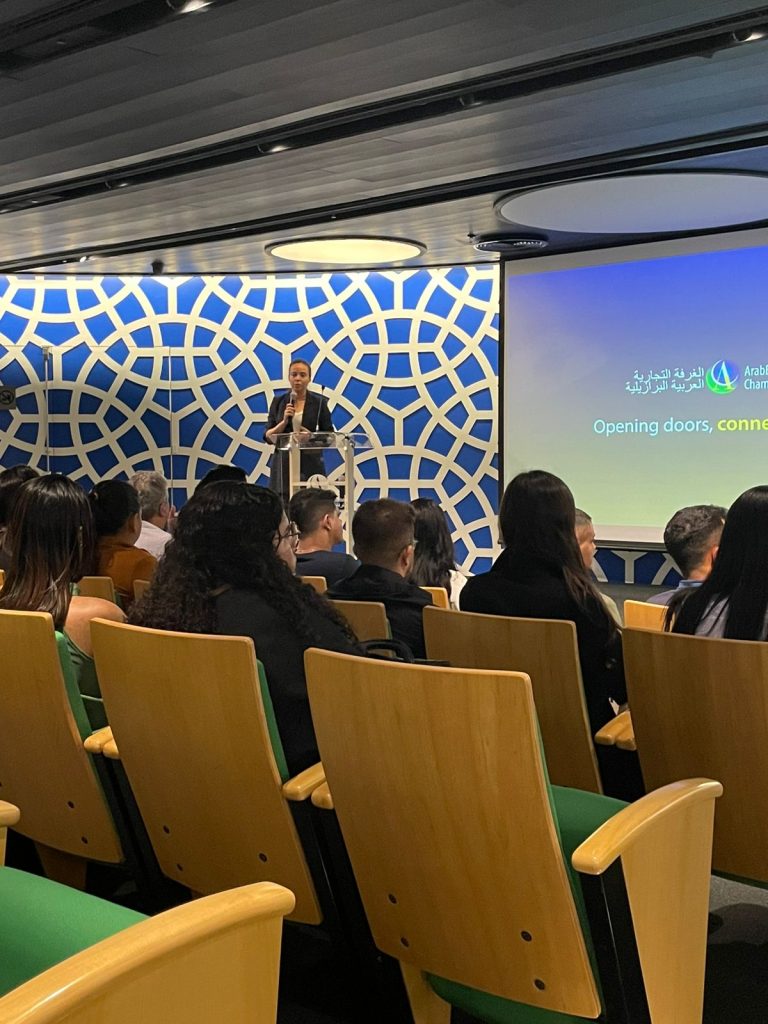São Paulo – They wanted to know if Brazil’s trade with Arab countries is made up only of large companies, whether regional conflicts are interfering with Brazil’s exports, if the currency used in Brazil-Arab countries trade goes beyond the dollar, and about the certification and quality seal requirements for the products those countries import. With these questions in mind, students from the Business Administration course at the State University of Maranhão (Uemasul) participated in an activity at the Arab-Brazilian Chamber of Commerce (ABCC) in São Paulo on Friday (22).

The students were introduced to the economic landscape of Arab countries and their trade with Brazil during their visit to the ABCC’s headquarters. In addition to exploring the institution’s facilities, which feature various elements of Arab culture, they attended lectures by the Chamber’s Vice President of Communications and Marketing Silvia Antibas and Director of Institutional Relations Fernanda Baltazar, in the presence of the Secretary-General and Vice President of International Relations Mohamad Orra Mourad.
The group is in São Paulo on a tour of various locations related to their studies. This was the third year that course’s international business professor and economist Francisco Robson Saraiva Martins took students to visit the ABCC. “The relationship between Brazil and the Arab world is one of the topics in the course, and we talk a lot about the ABCC,” Martins told ANBA at the end of the visit. “They’re always curious to come and learn more because there is a strong international relationship between Brazil and the Arab world, which sparks this curiosity,” he added.
Silvia Antibas opened the activity by telling the students about Arab immigration to Brazil, starting with the history of Arabs as peddlers and progressing to their cultural integration. She mentioned that figures from Maranhão, such as singer Zeca Baleiro and members of the band Tribo de Jah, have Arab ancestry. Antibas also spoke about the diversity among the 22 Arab countries, which share the Arabic language and Islam as common points. “Here, we deal with all this diversity when talking about business, when talking about culture,” said the vice president, who is a historian.
Fernanda Baltazar provided an overview to the students about trade between the Arab world and Brazil, highlighting that Brazilian exports are still heavily focused on commodities, while Arab shipments to Brazil are primarily centered on oil and fertilizers. However, she also mentioned efforts to diversify this trade and the strategic plans developed by Arab governments to expand revenue sources beyond the oil industry.

The director shared that the Arab world has a population of nearly 500 million people, with a young demographic that consumes a lot of technology and is highly internationalized. She pointed out peculiarities of each region, such as the Gulf, Arab Africa, and the Levant. In the Gulf, there are 94 million inhabitants and a GDP of USD 2.13 trillion, highlighting the region’s consumption potential. In Arab Africa, Baltazar noted similarities with Brazil, particularly in agribusiness production, and also mentioned the strong relationship between the Levant region and Brazil.
The director answered students’ questions about the Arab world, discussing the support provided by the ABCC and other Brazilian institutions to include more medium and small businesses in Brazil-Arab trade. She mentioned that trade flows with the region continue despite conflicts, that the dollar is the currency used in trade between Brazil and the Arabs, as it is in international trade in general, and that Arab countries have requirements related to certifications and standards that need to be met and understood by exporters to the region.
Students visited São Paulo
In addition to visiting the ABCC, the students also visited or were about to visit other locations in São Paulo, such as the B3 stock exchange, the Central Bank of Brazil, the Central Collection and Distribution Office (ECAD), and the former São Paulo Bank building. According to Professor Martins, the students are almost finishing their bachelor’s degree in business administration, and the trip is typically made during this period. The goal of the trip, according to the economist, is for the students to gain practical experience based on the theories they have studied for about three years.
Translated by Guilherme Miranda




